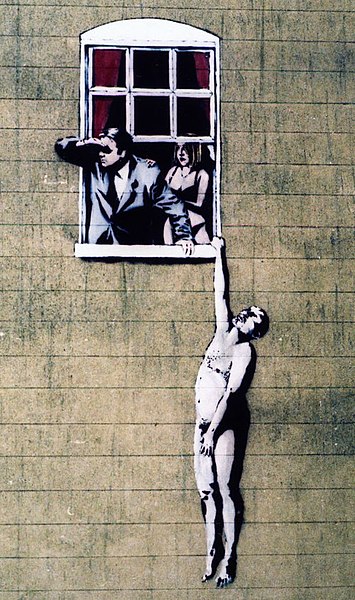The English word mummy is derived from medieval Latin mumia, a borrowing of the medieval Arabic word mūmiya , which meant an embalmed corpse, and a bituminous embalming substance, and also meant "bitumen".(See also: Mummia.) The medieval Latin and medieval English had the same meaning as the medieval Arabic. The meaning of "corpse preserved by desiccation" developed post-medievally. In English "mummy" as a term for a "medical preparation of the substance of mummies" is recorded from c. 1400, earlier than the sense of a complete body, with Richard Hakluyt in 1599 complaining that "these dead bodies are the Mummy which the Phisistians and Apothecaries doe against our willes make us to swallow".
The OED defines a mummy as "the body of a human being or animal enbalmed (according to the ancient Egyptian or some analogous method) as a preparation for burial", citing sources from 1615 onwards, later than the first uses of other senses that include ground up mummy used as "a medicinal preparation", which dates to c. 1400.However sense 3c: "A human or animal body desiccated by exposure to sun or air. Also applied to the frozen carcase of an animal imbedded in prehistoric ice", is cited to Chamber's Cyclopaedia, 1727–41, and the Victorian zoologist Francis Trevelyan Buckland.
The mummification process took seventy days. Special priests worked as embalmers, treating and wrapping the body. Beyond knowing the correct rituals and prayers to be performed at various stages, the priests also needed a detailed knowledge of human anatomy.
The first step in the process was the removal of all internal parts that might decay rapidly. The brain was removed by carefully inserting special hooked instruments up through the nostrils in order to pull out bits of brain tissue. It was a delicate operation, one which could easily disfigure the face. The embalmers then removed the organs of the abdomen and chest through a cut usually made on the left side of the abdomen. They left only the heart in place, believing it to be the center of a person's being and intelligence. The other organs were preserved separately, with the stomach, liver, lungs, and intestines placed in special boxes or jars today called canopic jars. These were buried with the mummy. In later mummies, the organs were treated, wrapped, and replaced within the body. Even so, unused canopic jars continued to be part of the burial ritual.
The embalmers next removed all moisture from the body. This they did by covering the body with natron, a type of salt which has great drying properties, and by placing additional natron packets inside the body. When the body had dried out completely, embalmers removed the internal packets and lightly washed the natron off the body. The result was a very dried-out but recognizable human form. To make the mummy seem even more life-like, sunken areas of the body were filled out with linen and other materials and false eyes were added.
Next the wrapping began. Each mummy needed hundreds of yards of linen. The priests carefully wound the long strips of linen around the body, sometimes even wrapping each finger and toe separately before wrapping the entire hand or foot. In order to protect the dead from mishap, amulets were placed among the wrappings and prayers and magical words written on some of the linen strips. Often the priests placed a mask of the person's face between the layers of head bandages. At several stages the form was coated with warm resin and the wrapping resumed once again. At last the priests wrapped the final cloth or shroud in place and secured it with linen strips. The mummy was complete.
After death, the pharaohs of Egypt usually were mummified and buried in elaborate tombs. Members of the nobility and officials also often received the same treatment, and occasionally, common people. However, the process was an expensive one, beyond the means of many.
For religious reasons, some animals were also mummified. The sacred bulls from the early dynasties had their own cemetery at Sakkara. Baboons, cats, birds, and crocodiles, which also had great religious significance, were sometimes mummified, especially in the later dynasties.






















